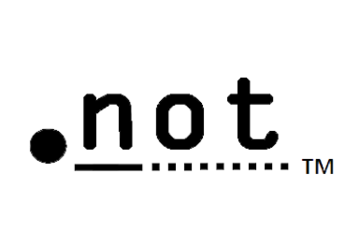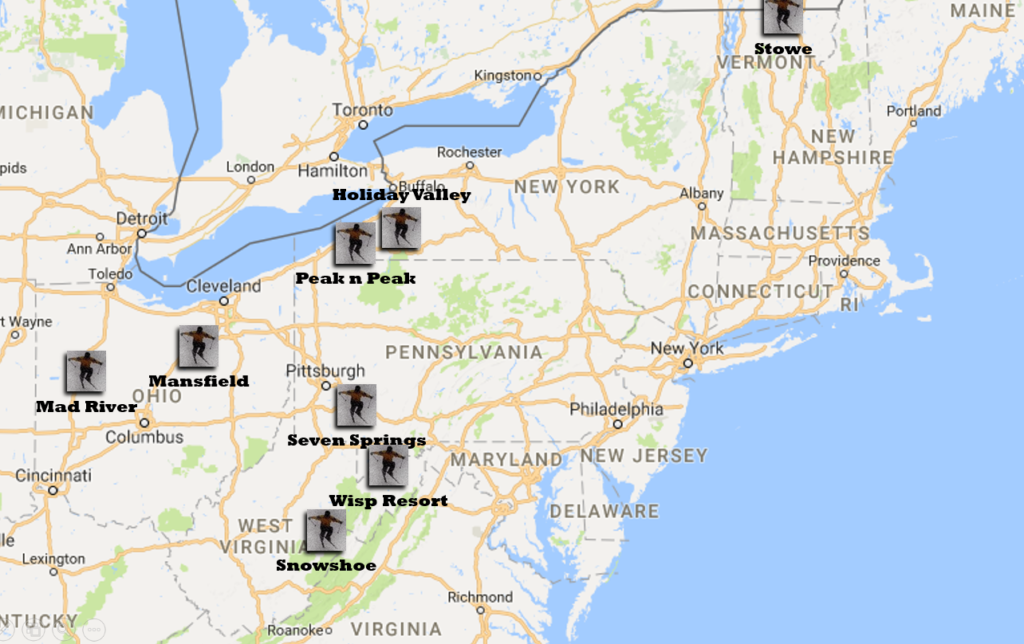Category Archives: All
All of the posts on this site.
Mike Ryan’s Triboz
Meet Mike Ryan, and the Massa Trio Plays Triboz with Pictures, from my series Rio 2017 Made by Hand:
Triboz Rio Website
Mike Ryan’s Rio Art Orquestra Facebook Page
Click here for the Rio 2017 Made by Hand series.
Nate’s Favorite Things 2017
This is the fourth edition of my attempt to surpass Oprah in her dominance of the favorite things market. It is my most interesting list yet and includes a lot more of my friends. Check them out, support them, and Merry Christmas!
1. Jigisha Patel’s “Positive” T-shirts
Check out the Dot Not Shop with creative T-shirts and other great gear. Comment at the bottom with suggestions for Jigisha. My favorite .not gear that doesn’t exist yet is YourFace.not What .not shirt do you want to see next?
2. Libby Harris’ Book Box Club
My friend Graeme’s entrepreneurial daughter started this online book club for teens. It’s based in the UK, so it must be cool and of course they are the English experts. Get your high school age kids into something positive on the vast internet!
3. Katie’s Tru Man Brand
I met Katie of Tru Man Brand appropriately enough during an Ohio State football game. I had already seen her “OH So Good” T-shirts out and about so that makes her Columbus famous at least. Get a cool Ohio T-shirt this year that is designed a little off the beaten path from the usual Buckeye gear. Click here for the Tru Man Brand store.
4. Meet Cbus TV
OK, it isn’t even out yet, but Meet Cbus TV is coming in 2018 and it’s part mine, so of course it’s one of my favorite things. Subscribe, or buy a T-shirt (coming soon), to support our effort to put a camera on the most interesting people in Columbus!

5. Simple Kneads Gluten-Free Bread
They just keep growing and growing. Simple Kneads is in Whole Foods and expanding fast to a grocery near you. You can buy online while you wait for their arrival at the grocery.
6. Logitech Bluetooth Headset
If you talk on the phone, this product will change your life. This accessory is an absolute must-have.
- Wireless
- Hear conversation in both ears
- Hands-free
- Rechargeable with standard USB
- Quickly switch between computer and phone
7. NutriBullet
High quality and essential for getting a healthy breakfast on the run in those always-short morning hours.
8. What to Watch
There is so much alternative media out there, I decided to select the best-of-the-best to help curb those at-work and late-night “end of the internets” binges. Click here or on the TV and you’ll earn a history degree by accident:
The Challenge
Oprah has around 365 live audience members at her show. I’ll shoot for 365 hits to this page. Help me out and help the small businesses by sharing.
What to Watch Today
Click here for all What to Watch episodes.
I recommend by category in order by the tags below. Click a tag to select a category:
Ventures Update November 2017
695 Riverview Drive
I have been taking my own advice by improving what I have in lieu of buying more. Click here to see renovated apartment B4 available now.
We (my brother and I own this jointly) were contacted again with an offer to purchase. We shared stories with the prospective buyer about how we love our buildings, and turned the offer down.
Real Estate Agent
I went door-to-door in Clintonville and it was actually a very pleasant experience. It helped that there was nice weather and the people were nice, but also because I had something besides real estate to talk about. I was also pitching Meet Cbus TV:
Meet Cbus TV
I teamed up with videographer Matt DeNoble who is graduating from Ohio State this winter. We are going to do promotional videos for small businesses and have larger businesses sponsor them. The small businesses get free exposure. The large businesses get an authentic connection with the small business clientele, and the city of Columbus gets quality content from our own back yard!
Park City Holdings
I continue to adjust course on Park City Holdings. There is a huge opportunity. We need to tap it.
Kineomen
Kineomen’s founder has graduated from Duke Business School, so full steam ahead.
Simple Kneads Gluten-Free Bread
Simple Kneads is now available in 5+ Whole Foods stores in the North Carolina research triangle area and growing fast.
Vino de Coco
I still plan to visit the Philippines. Still.
Other
Art Gallery
Videos and Marketing
Local internet. Relevant advertising that people want to see, rather than trying to trick people for 5-30 seconds. Informative advertising. People are smart and getting smarter. Attention marketers! Trying to trick us just isn’t working anymore.
Hyperinflation … of Stuff
You may have heard of or remember from history class stories of “hyperinflation,” where the value of money drops to zero. Above are the most iconic images of this concept that I can think of. They are from the post-World War 1 German Weimar Republic.
How does this relate to us here today? How does it relate to real estate? Real estate is expensive. Space is at a premium. We have so much stuff that we can hardly fit it all in! In my first year in real estate, this has been one of the most striking surprises. My clients, who are moving, try to sell their things. Beautiful china cabinets and kitchen sets cannot find space on the floor of a consignment shop.

Sellers are happy if somebody can come pick them up and take them away. Working refrigerators on Craigslist have to be dropped to $20 or even free to get rid of them. I sold a nice desk and perfectly good adjustable rolling office chair for $30, but had to let the desk go by itself for $20 and I even delivered it for the buyer.
No space for the chair! I let it go for free so that somebody would come and get it. Consignment shops, re-purpose stores, and Goodwill are jam packed with stuff and there are more re-use stores popping up all the time. “New Uses” in Columbus is the latest one that I know of. There are three locations.
Have you been to the dump lately? It costs anywhere from $10-$50 and they are getting more and more picky about what they take. That’s right. Even the dump is picky about what they take. There are only a few dump locations who will take items with refrigerant (Sims in Delaware has the required equipment) and I have yet to find one that takes old fluorescent bulbs.
What to Do?
Trade in used goods. Use Craigslist. Garage sales have great stuff now. Check out this post here for several good options. Get a deal on the purchase, because you may find that selling actually costs you more money!
Our Favorite Ski Locations
Holiday Valley snow report
Ski Resorts
- Snowmass: 3,362 acres, 4,406ft vertical.
- Vail: 5,289 acres, 3,450ft vertical.
- Breckenridge: 2,908 acres, 3,398ft vertical.
- Beaver Creek: 1,815 acres, 3,340ft vertical.
- Keystone: 3,148 acres, 3,128ft vertical.
- Stowe: 485 acres, 2,360ft vertical.
- Snowshoe: 244 acres, 1,500ft vertical. Very difficult drive Greg says.
- Holiday Valley: 290 acres 750ft vertical.
- Seven Springs: 285 acres, 750ft vertical.
- Wisp Mountain: 132 acres, 700ft vertical. Greg and Pat have been. It is an easy drive from the interstate.
- Peak n Peak: 130 acres, 400ft vertical. Ed, Greg, and Thad have been. Good?
- Perfect North: 100 acres, 400ft vertical. Rachel’s suggestion. 45 minutes west of Cincinnati.
Check out OnTheSnow snow report app. Pat uses it for snow storm alerts.
Property Value Reappraisals
Franklin County and surrounding counties are releasing their property value reappraisals in 2017. This includes Delaware County.
Franklin County
In Franklin County, you can see your new 2017 “Tentative Value” by searching your property on the auditor website. You can reach the property search page by clicking “Useful Links” on the menu on the left of this page. The Tentative Value report for your property gives information about the reappraisal process. If you choose to dispute the value, you can contact the Franklin County Board of Revision. Be sure to arrive with a professional appraisal, and if you own your property through an LLC, you must be represented by a lawyer.
Delaware County
You can search for your Delaware County new appraised value by clicking here.
Delaware County reappraisal information can be found by clicking here.
Straight to the Source
Several stats are most often quoted when talking about the real estate market. Current inventory, months supply of inventory, and median sale price, for example. How can you look these up yourself? You don’t have to be a Realtor® to do so. These stats are available on the Columbus Realtors® website.
http://www.columbusrealtors.com/stats
For example, we have heard that the inventory is low. How low is it exactly? Months supply of inventory is the number of months it would take for the current inventory of homes to sell given the current pace of sales.
- In June 2017, Franklin County had 1.4 months of supply and Delaware County had 2.3 months of supply.
- Central Ohio in general in June 2017 had 1.9 months of supply.
- 6 years ago, in June of 2011, Central Ohio had about 10 months of supply.
Indeed, the inventory is low!
I had to go to the archive to get the 2011 statistic, but all are available at the link above.
America’s Eclipse!
Monday, 21 August 2017 at 1425 Eastern Daylight Time, Centered Near Cerulean, Kentucky
Eclipseville, Hopkinsville, KY, home of longest totality and Eclipse Con
You have to see the total eclipse! This guy says it best: http://www.eclipse2017.org/2017/close_enough.htm
Click here for a NASA animation of the eclipse. You’ll see why it is America’s eclipse. It could not be better lined up for us.
Click here for a map with Zulu time. Subtract 4 hours for eastern daylight time. Subtract 5 hours for central daylight time.
How fast is the shadow moving? It depends. Answer
The Eclipses You (Might) Remember
10 May 1994. I was finishing 4th grade. I remember going outside with the glasses. The view was pretty good for Ohio. However, this was an annular eclipse only. NOT AS COOL.
30 May 1984: This was an annular eclipse that crossed the southeast US. Maybe some people remember? NOT AS COOL.
7 Mar 1970: This total eclipse moved up the east coast of the US. Partial may have been visible from Ohio. NOT AS COOL.
20 Jul 1963: This total eclipse crossed Canada. NOT AS COOL.
30 Jun 1954: This total eclipse started in the US, then went up over the north pole and ended in Asia. NOT AS COOL.
9 Jul 1945: This total eclipse started near Montana and ended in eastern China. Many Americans had a legitimate pass to not travel to Greenland to see this one. The world was kinda busy during July 1945.
7 Apr 1940: Annular eclipse that crossed Mexico, Texas, and Florida. The Nazis were in power, and Pearl Harbor was attacked 20 months later. Anyone drive south see this one? Comment below.
28 Apr 1930: This total eclipse crossed the US northwest less than a year into the Great Depression.
24 Jan 1925: This total eclipse started in Canada and crossed the northeast US.
8 Jun 1918: This total eclipse ended by crossing the US from Washington to Florida. World War I ended 5 months later. Hopefully you weren’t one of the 50 – 100 million people worldwide dying of the flu pandemic that was raging at the time. There are roughly 28 living Americans who were at least 11 years old that day.
22 Oct 2137 BC: 120 years more ancient to Jesus than Jesus is to us. Apparently visible in China, but an unfortunate surprise to the astronomers of the day.
Upcoming
It looks like we actually have some good ones coming up.
8 Apr 2024: Ohio’s eclipse.
12 Aug 2045: over 6 minutes of totality on this one.
















































